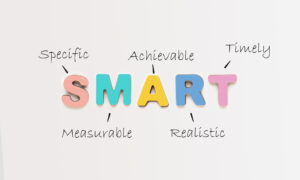As we start 2024, it’s an opportune moment to cast forward and envision a year of unparalleled safety and success. At BEST Safety Training and Consulting, we firmly advocate for the establishment of safety goals as they not only shape the trajectory of a secure and thriving year but also lay the foundation for a workplace that prioritizes well-being and prosperity. Why set safety goals?

- Enhance Communication: Foster open dialogue about safety, ensuring everyone is informed and can contribute insights.
- Continuous Training: Invest in ongoing safety training to empower employees with the necessary skills.
- Milestone Recognition: Celebrate safety achievements to reinforce positive behavior and build pride.
- Regular Audits: Conduct frequent safety audits to identify areas for improvement and ensure compliance.
- Performance Reviews: Integrate safety metrics into performance assessments to highlight their importance.
- Innovative Solutions: Foster a culture that welcomes innovative ideas for enhancing safety practices.
- Emergency Preparedness: Establish clear emergency response plans and conduct regular drills for readiness.
- Mental Health Support: Recognize the link between mental health and safety, promoting employee well-being.
How to Set SMART Safety Goals

Have you ever heard of SMART Goals? When it comes to safety goals for 2024, think SMART. Smart stands for:
SPECIFIC: A specific goal answers questions such as:
- What needs to be accomplished?
- Who is going to be responsible?
- Who are the key players who will help us achieve this goal?
- What steps do we need to take to get there?
The more specific your goal, the clearer the path to achieving it.
MEASUREABLE: Effective goals are characterized by clear and measurable markers of success. While setting a goal, such as minimizing lost-time injuries, may seem impressive, it’s crucial to establish how you’ll gauge its achievement. Assessing quantifiable data is essential to ascertain whether the implemented strategies are indeed reducing the occurrence of lost-time injuries. No matter the nature of the goal, it’s imperative to have a system in place for tracking progress and success. If the data fails to reflect progress, it may be necessary to adjust strategies or redefine the goal itself.
ACHIEVABLE: Goals must be realistic and attainable. Consider our scenario of minimizing lost-time injuries. Setting a goal of zero lost-time injuries for 2023 requires evaluation. If we had zero or just one such incident last year, it may be within reach. However, if there were 20 incidents, aiming for zero the next year becomes an unrealistic goal that requires adjustment. In this case, a more achievable objective could involve reducing lost-time injuries by a certain percentage, such as 20%, instead of aiming for complete elimination.
REALISTIC: Take a step back from the goal and ask, “Why am I setting the goal that I am setting?” Doing this will help you ensure your goal is relevant to the overall health and safety initiatives at your organization.
TIMELY: Initiating a safety goal is commendable, especially when it’s specific, measurable, achievable, and relevant. However, to enhance its effectiveness, a crucial element is a specified timeframe, or “by-when.” For instance, if the goal is to reduce lost-time injuries by 20%, it’s essential to determine the time frame—whether it’s a 20% reduction each quarter, by the end of the fiscal year, or over a set period. Adding a time-bound aspect to your goal establishes accountability and facilitates the establishment of new objectives once the current targets are met.
Where Do I Start?

Not sure where to start when it comes to setting SMART safety goals for 2024? Start by reflecting. Maybe that’s something you do alone, or perhaps you bring a few key players together, such as the JHSC. To get you started, we’ve listed a few ideas below.
SMART Goal 1: Support the Right to Disconnect
On June 2, 2022, employers had to have created and implemented a written policy supporting workers’ rights to disconnect outside of working hours, with a few exceptions. But having a policy isn’t enough. Set a SMART goal to help your organization commit to ensuring that all employees are taking that much-needed time away to recharge so that they bring their best selves forward when it’s time for work.
SMART Goal 2: Motivate your JHSC
A motivated Joint Health and Safety Committee (JHSC) is an effective JHSC! Having an effective JHSC has numerous benefits, such as:
- Lower injury and illness rates in the workplace, resulting in less lost time
- A more positive safety culture, resulting in proactive safety initiatives and programs
- Happier and healthier workers with better productivity rates
Set a SMART goal to keep the JHSC motivated and effective, such as implementing an incentive program or giving them new stretch goals. And don’t forget to reward the JHSC for their hard work and efforts!
SMART Goal 3: Commit to Learning More in 2024
Transform 2024 into the year where every employee undergoes the necessary training to ensure compliance, safety, and well-being at the workplace. This could involve retraining or recertifying workers if their qualifications have lapsed, delivering new or updated training to all staff members, or making a commitment to certify all Joint Health and Safety Committee (JHSC) members.
Not Sure Where to Start? BEST Safety Training Can Help
Download this FREE Setting SMART Safety Goals Calendar, courtesy of BEST Safety Training and Consulting.
Like the calendar? Add your email to our mailing list to get one FREE, straight to your inbox, every month. Each month features a new topic, all designed to keep your workplace safe, healthy, and compliant.
